Abstract
A new spontaneous autosomal recessive mutation has recently occurred at the motheaten (me) locus on Chromosome 6 in strain C57BL/6J mice. Homozygotes for the new allele, designated "viable motheaten" (mev), have a mean life span of 61 +/- 2.4 days, compared with only 22 +/- 1.3 days for C57BL/6J-me/me mice. Like the original motheaten mutation, the immediate cause of death in mev/mev mice appears to be severe pneumonitis associated with accumulations of macrophages, granulocytes, and lymphocytes in the lungs. However, because of its longer life span, progression of the disease in mev/mev mice is more amenable to investigation. Eosinophilic crystalline material in alveolar macrophages from mev/mev mice is associated with extravasation of erythrocytes into alveoli. These crystals are morphologically indistinguishable from hematoidin, which results from hemoglobin breakdown following uptake of erythrocytes by macrophages. Severe macrocytic hypochromic anemia with abnormalities in size and shape of erythrocytes develops by 7 weeks. A two-fold increase in peripheral leukocyte count and a five-fold increase in the percentage of neutrophils is seen by 10 weeks. Viable motheaten mice develop focal granulocytic skin lesions by 4 days of age, show depletion of cells from the thymus cortex by 4 weeks, and lack lymphoid follicles in the lymph nodes, spleen, and Peyer's patches. Excessive erythropoiesis and myelopoiesis in the spleen result in marked splenomegaly. Lymph nodes and spleens from mev/mev mice contain increased numbers of plasma cells by 3 weeks; and by 6 weeks, large numbers of atypical plasma cells with Russell bodies are evident. Development of glomerulonephritis by 10 weeks is characterized by granular depositis of immunoglobulin and complement within glomeruli. A twofold increase of blood urea nitrogen levels is present by 15 weeks. Sterility of male mev/mev mice is associated with Leydig cell depletion in the testes, lowered testosterone levels, and impaired spermatogenesis.
Full text
PDF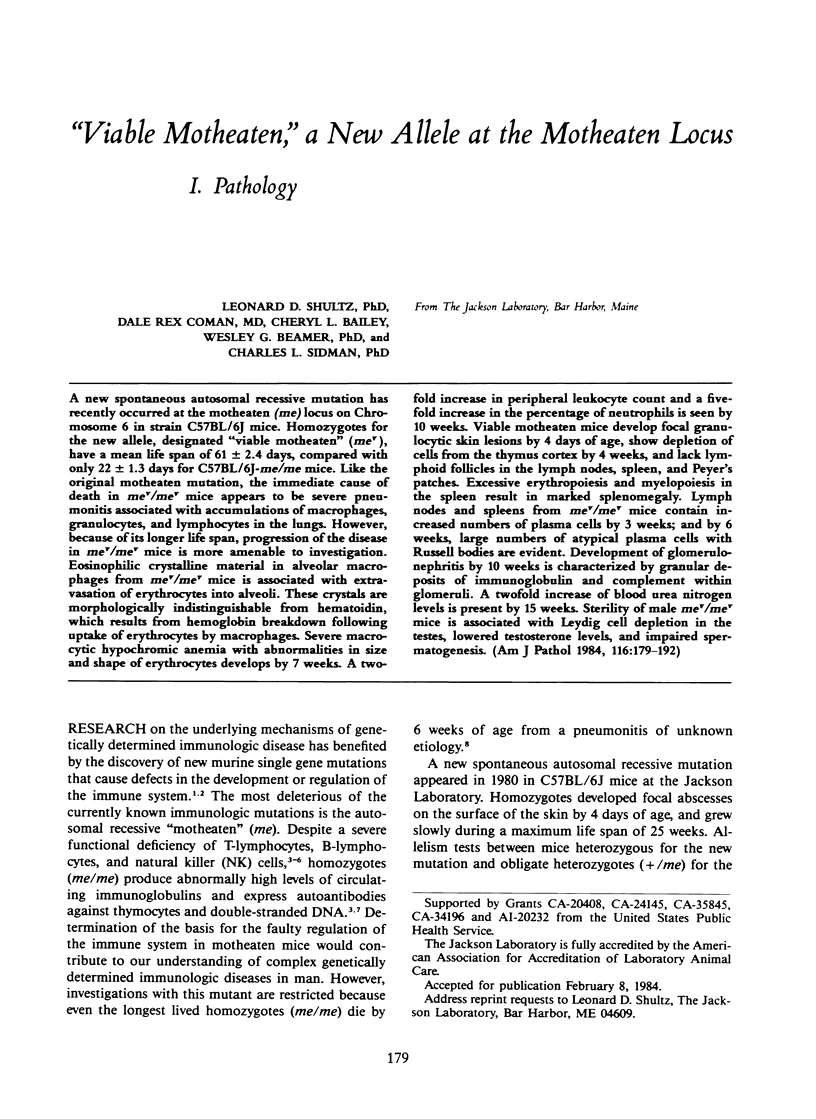
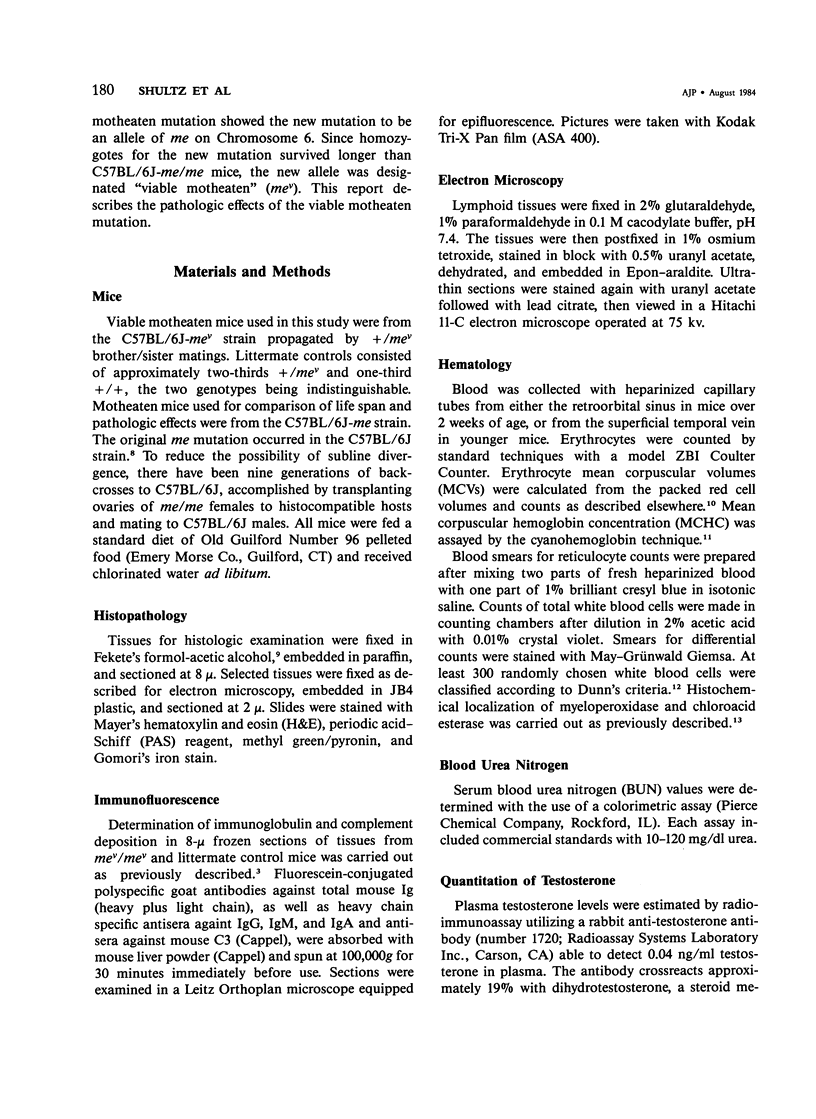
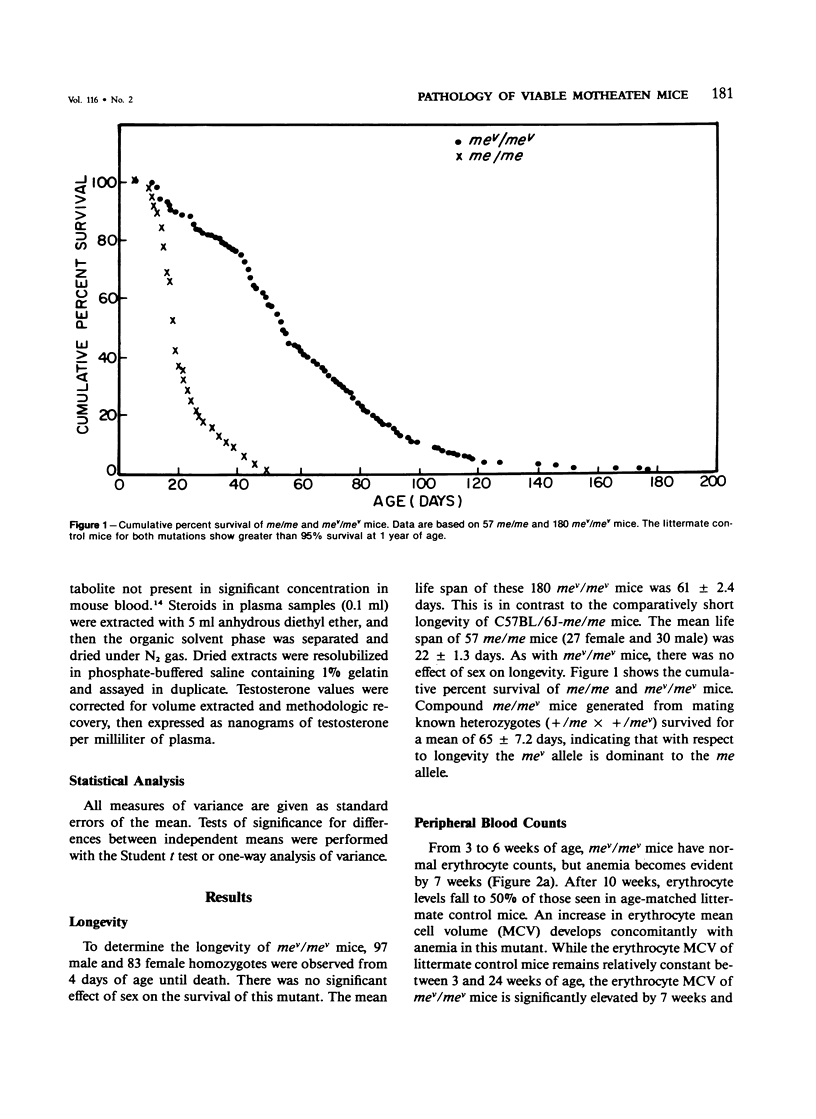
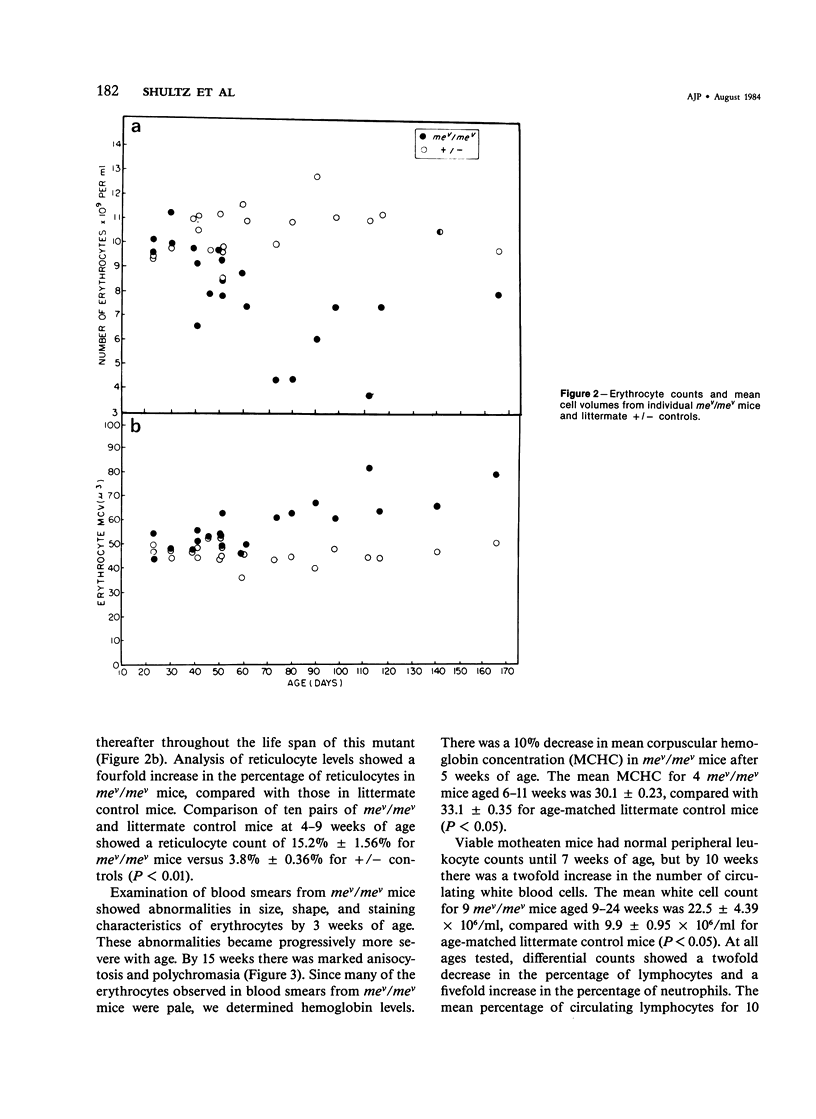
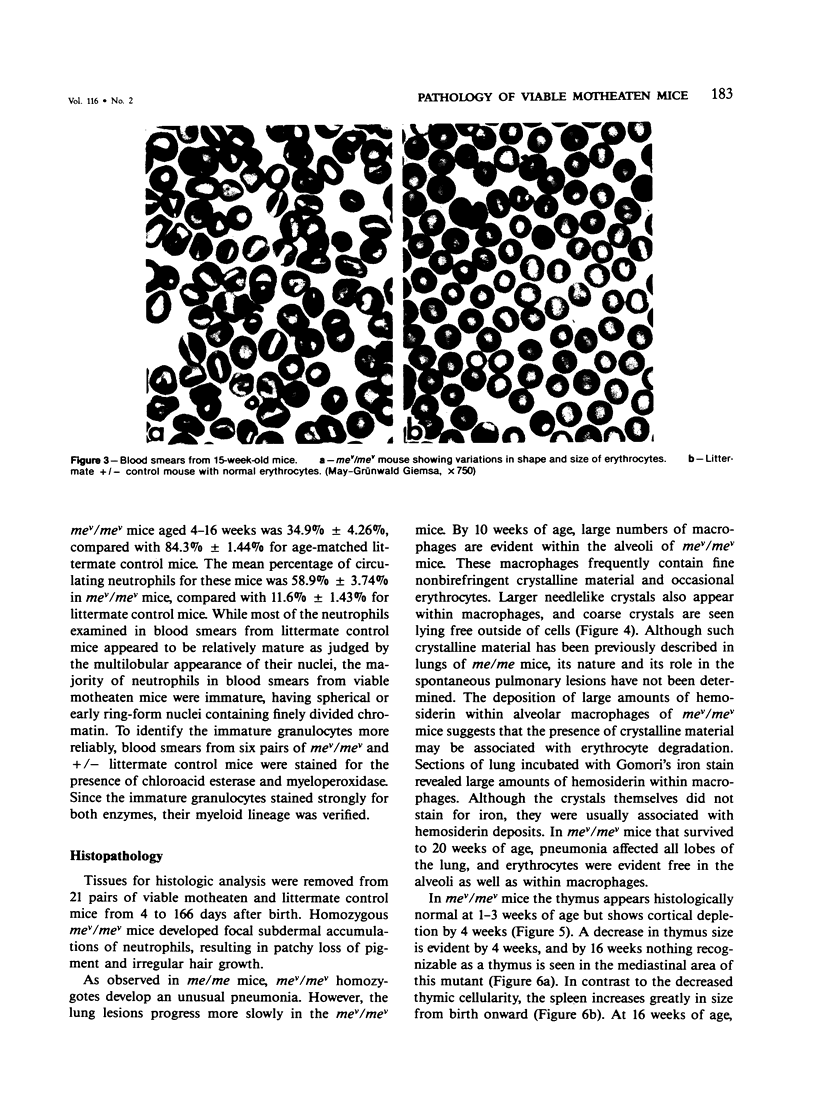
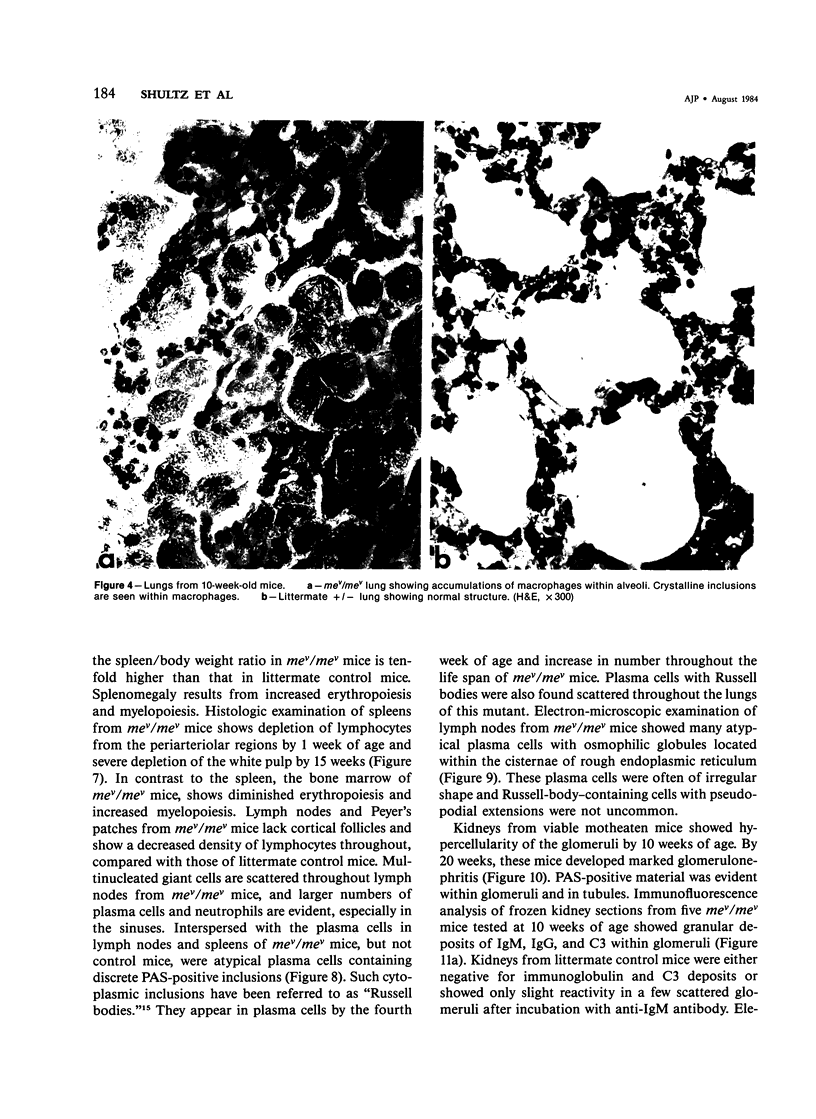
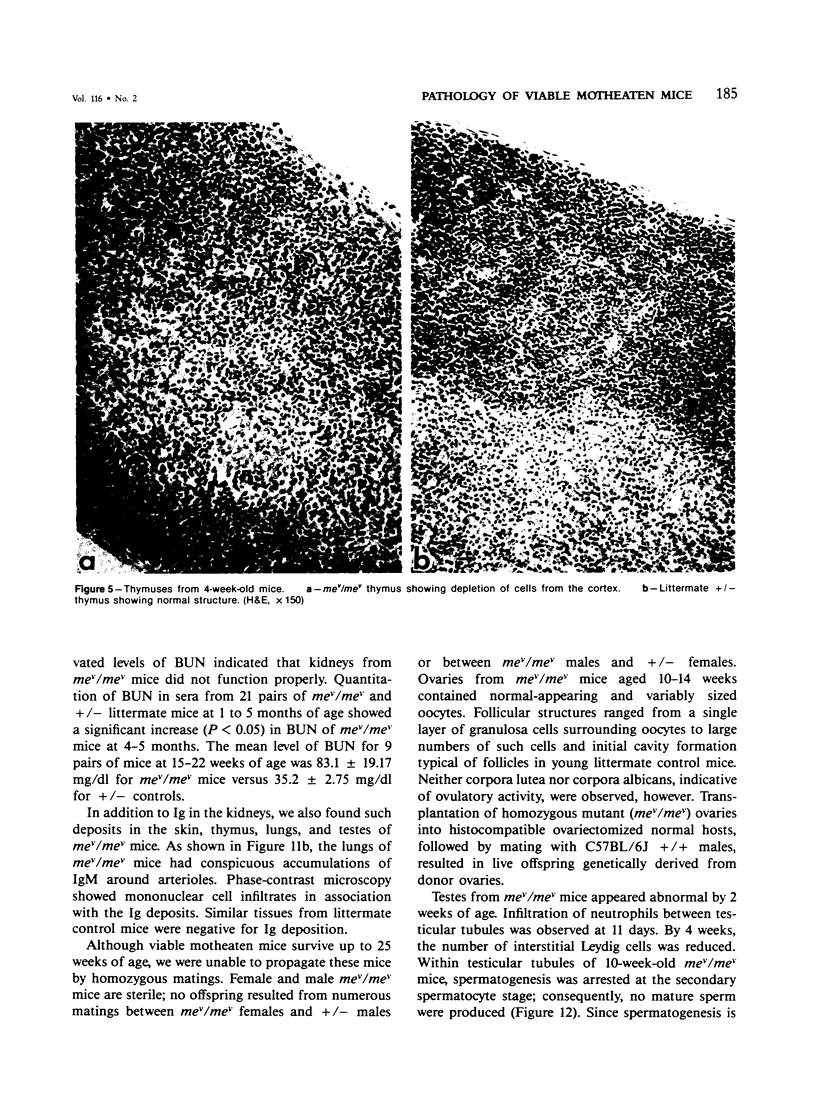
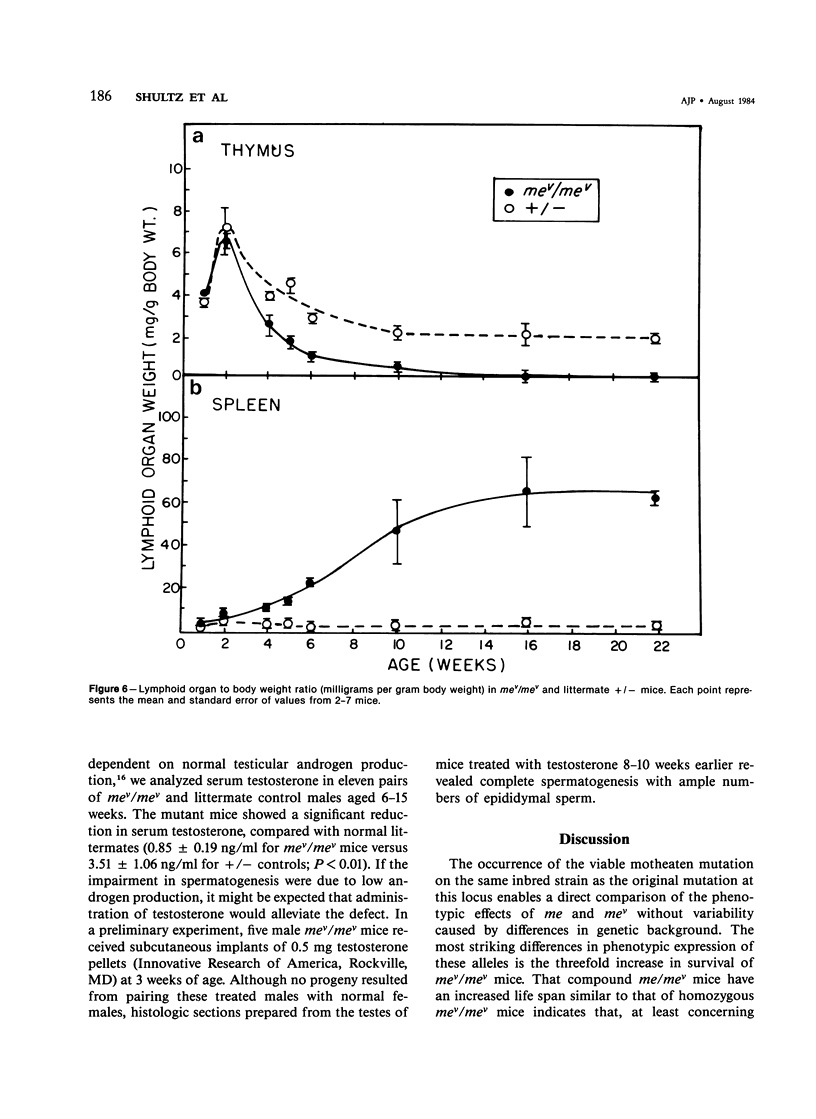
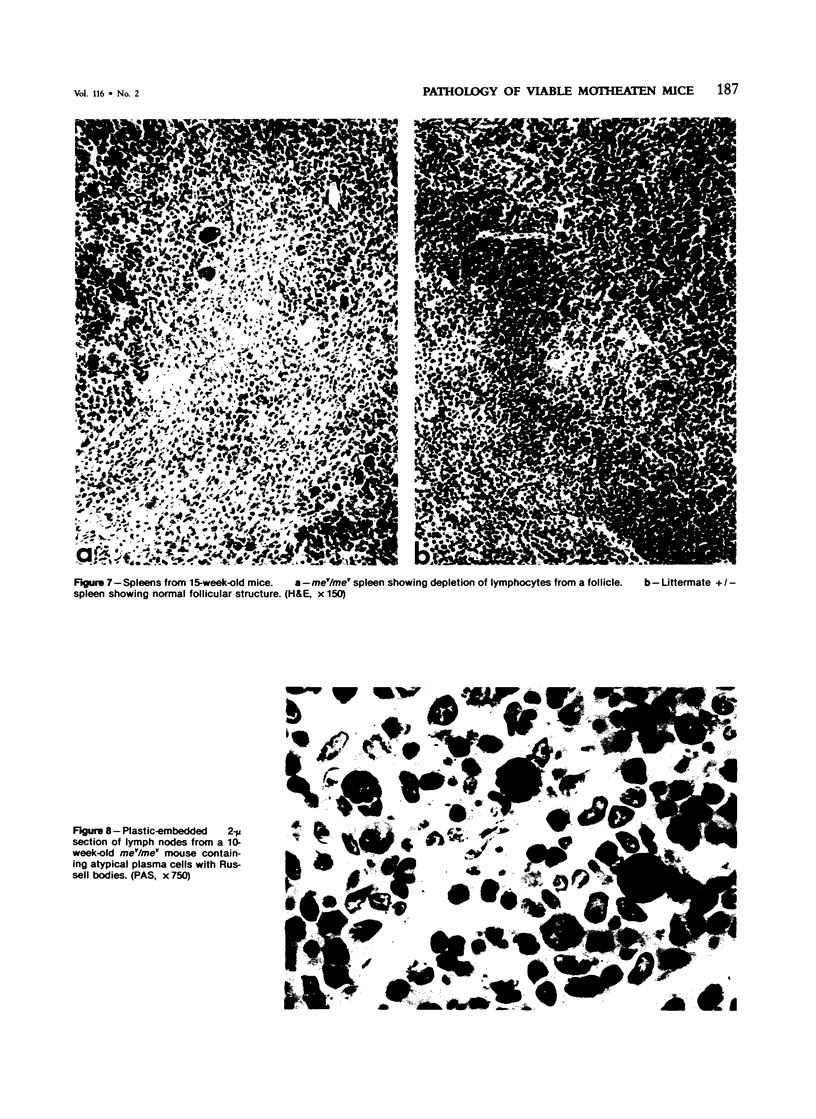
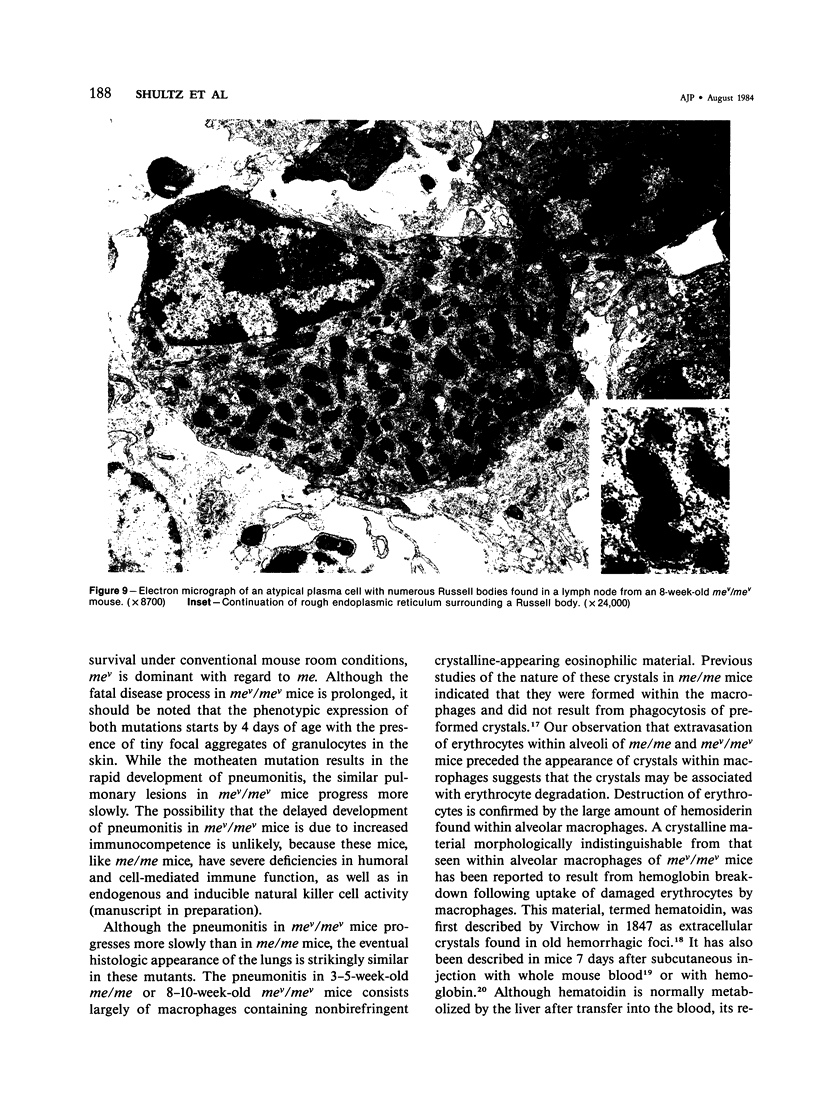
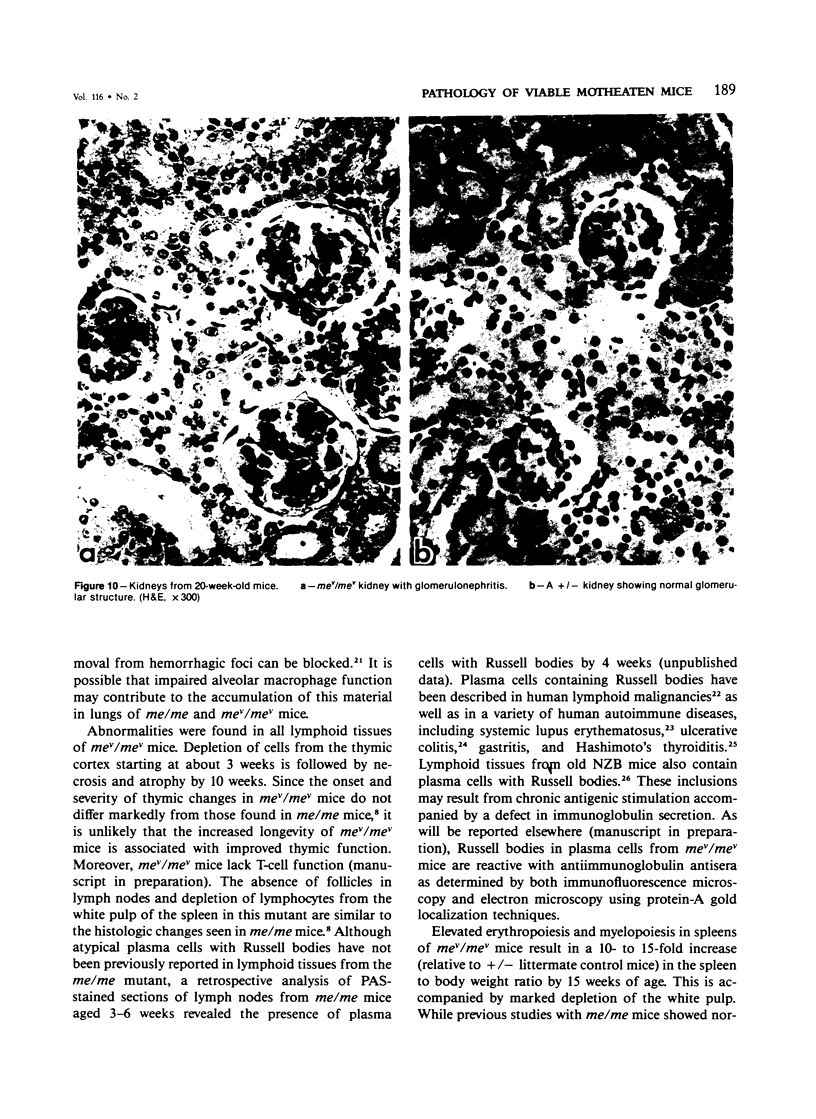
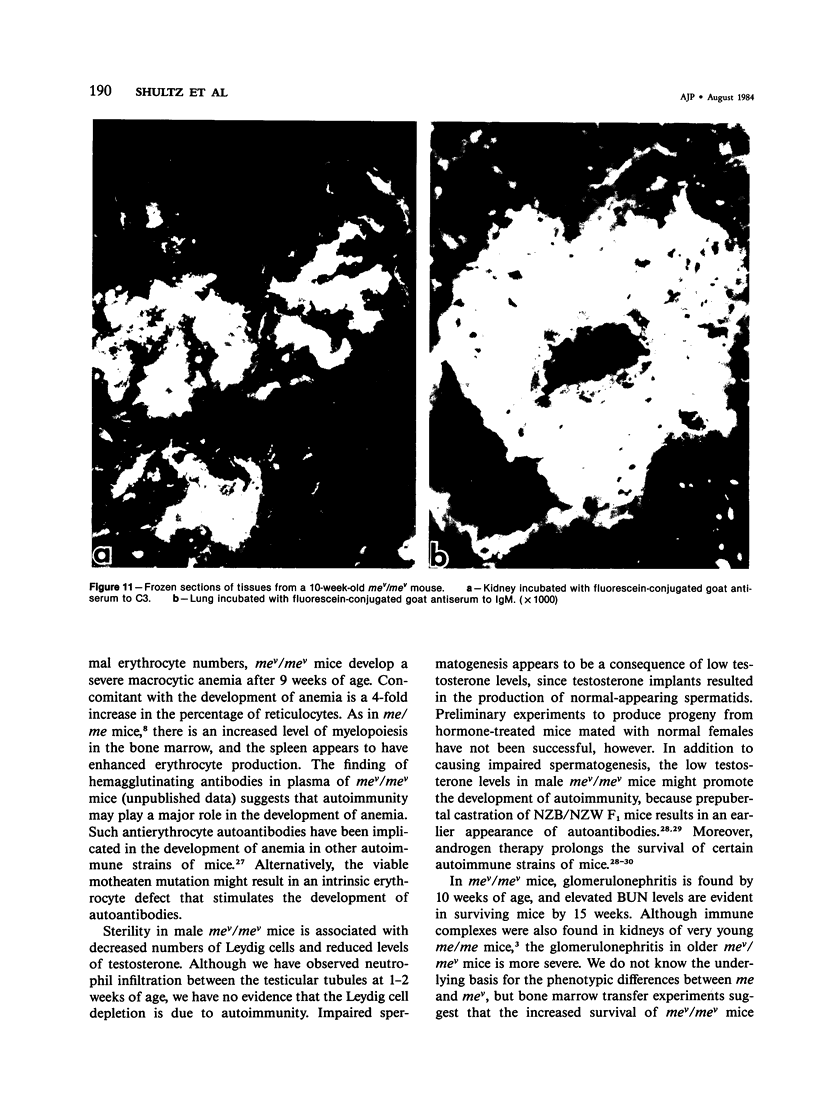
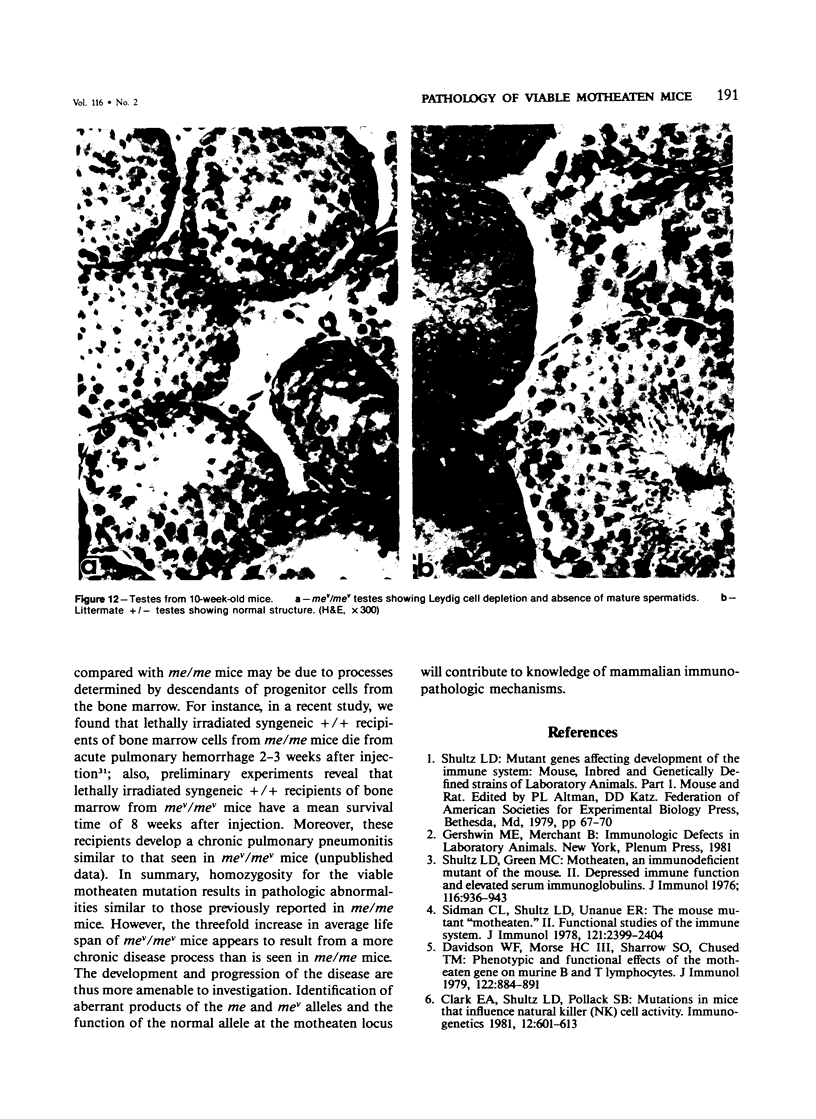
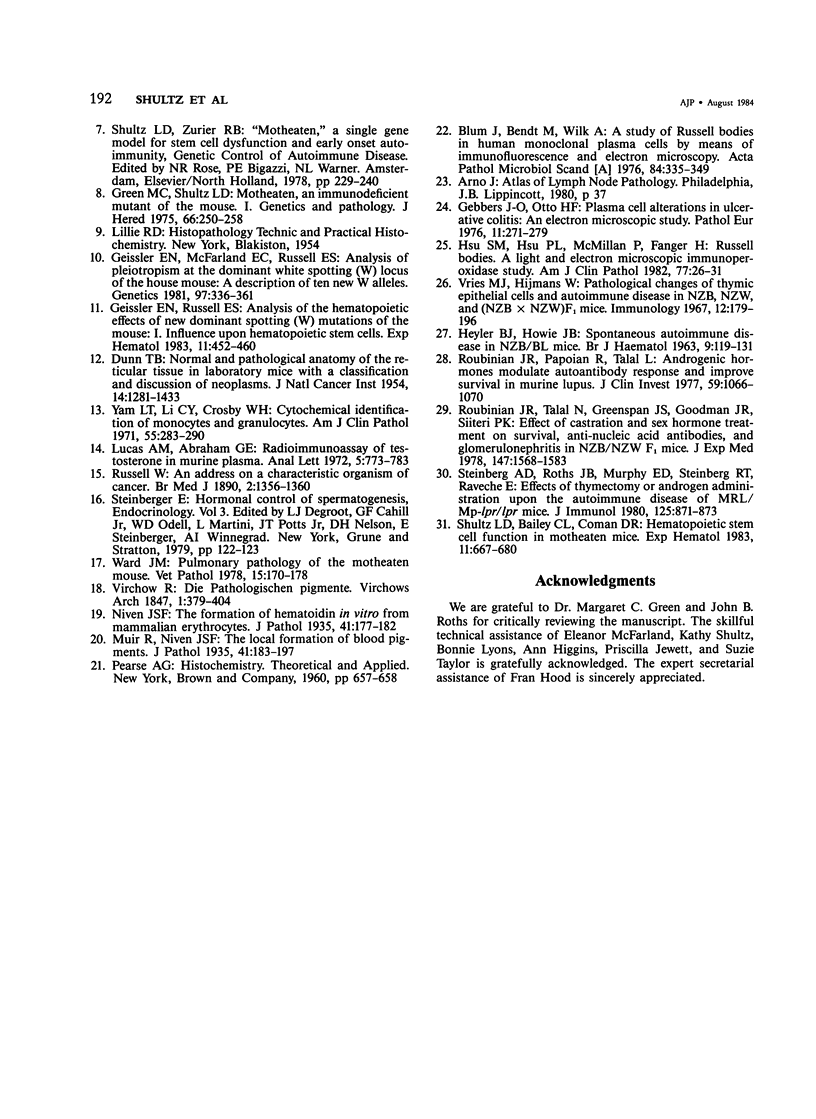
Images in this article
Selected References
These references are in PubMed. This may not be the complete list of references from this article.
- Blom J., Mansa B., Wilk A. A study of Russell bodies in human monoclonal plasma cells by means of immunofluorescence and electron microscopy. Acta Pathol Microbiol Scand A. 1976 Jul;84(4):335–349. doi: 10.1111/j.1699-0463.1976.tb00124.x. [DOI] [PubMed] [Google Scholar]
- Clark E. A., Shultz L. D., Pollack S. B. Mutations in mice that influence natural killer (NK) cell activity. Immunogenetics. 1981 Mar 1;12(5-6):601–613. doi: 10.1007/BF01561700. [DOI] [PubMed] [Google Scholar]
- DUNN T. B. Normal and pathologic anatomy of the reticular tissue in laboratory mice, with a classification and discussion of neoplasms. J Natl Cancer Inst. 1954 Jun;14(6):1281–1433. [PubMed] [Google Scholar]
- Davidson W. F., Morse H. C., 3rd, Sharrow S. O., Chused T. M. Phenotypic and functional effects of the motheaten gene on murine B and T lymphocytes. J Immunol. 1979 Mar;122(3):884–891. [PubMed] [Google Scholar]
- Gebbers J. O., Otto H. F. Plasma cell alterations in ulcerative colitis. An electron microscopic study. Pathol Eur. 1976;11(4):271–279. [PubMed] [Google Scholar]
- Geissler E. N., McFarland E. C., Russell E. S. Analysis of pleiotropism at the dominant white-spotting (W) locus of the house mouse: a description of ten new W alleles. Genetics. 1981 Feb;97(2):337–361. doi: 10.1093/genetics/97.2.337. [DOI] [PMC free article] [PubMed] [Google Scholar]
- Geissler E. N., Russell E. S. Analysis of the hematopoietic effects of new dominant spotting (W) mutations of the mouse. I. Influence upon hematopoietic stem cells. Exp Hematol. 1983 Jul;11(6):452–460. [PubMed] [Google Scholar]
- Green M. C., Shultz L. D. Motheaten, an immunodeficient mutant of the mouse. I. Genetics and pathology. J Hered. 1975 Sep-Oct;66(5):250–258. doi: 10.1093/oxfordjournals.jhered.a108625. [DOI] [PubMed] [Google Scholar]
- HELYER B. J., HOWIE J. B. Spontaneous auto-immune disease in NZB/BL mice. Br J Haematol. 1963 Apr;9:119–131. doi: 10.1111/j.1365-2141.1963.tb05450.x. [DOI] [PubMed] [Google Scholar]
- Hsu S. M., Hsu P. L., McMillan P. N., Fanger H. Russell bodies: a light and electron microscopic immunoperoxidase study. Am J Clin Pathol. 1982 Jan;77(1):26–31. doi: 10.1093/ajcp/77.1.26. [DOI] [PubMed] [Google Scholar]
- Roubinian J. R., Papoian R., Talal N. Androgenic hormones modulate autoantibody responses and improve survival in murine lupus. J Clin Invest. 1977 Jun;59(6):1066–1070. doi: 10.1172/JCI108729. [DOI] [PMC free article] [PubMed] [Google Scholar]
- Roubinian J. R., Talal N., Greenspan J. S., Goodman J. R., Siiteri P. K. Effect of castration and sex hormone treatment on survival, anti-nucleic acid antibodies, and glomerulonephritis in NZB/NZW F1 mice. J Exp Med. 1978 Jun 1;147(6):1568–1583. doi: 10.1084/jem.147.6.1568. [DOI] [PMC free article] [PubMed] [Google Scholar]
- Shultz L. D., Bailey C. L., Coman D. R. Hematopoietic stem cell function in motheaten mice. Exp Hematol. 1983 Aug;11(7):667–680. [PubMed] [Google Scholar]
- Shultz L. D., Green M. C. Motheaten, an immunodeficient mutant of the mouse. II. Depressed immune competence and elevated serum immunoglobulins. J Immunol. 1976 Apr;116(4):936–943. [PubMed] [Google Scholar]
- Sidman C. L., Shultz L. D., Unanue E. R. The mouse mutant "motheaten." II. Functional studies of the immune system. J Immunol. 1978 Dec;121(6):2399–2404. [PubMed] [Google Scholar]
- Steinberg A. D., Roths J. B., Murphy E. D., Steinberg R. T., Raveche E. S. Effects of thymectomy or androgen administration upon the autoimmune disease of MRL/Mp-lpr/lpr mice. J Immunol. 1980 Aug;125(2):871–873. [PubMed] [Google Scholar]
- Ward J. M. Pulmonary pathology of the motheaten mouse. Vet Pathol. 1978 Mar;15(2):170–178. doi: 10.1177/030098587801500203. [DOI] [PubMed] [Google Scholar]
- Yam L. T., Li C. Y., Crosby W. H. Cytochemical identification of monocytes and granulocytes. Am J Clin Pathol. 1971 Mar;55(3):283–290. doi: 10.1093/ajcp/55.3.283. [DOI] [PubMed] [Google Scholar]
- de Vries M. J., Hijmans W. Pathological changes of thymic epithelial cells and autoimmune disease in NZB, NZW and (NZB x NZW)F1 mice. Immunology. 1967 Feb;12(2):179–196. [PMC free article] [PubMed] [Google Scholar]











